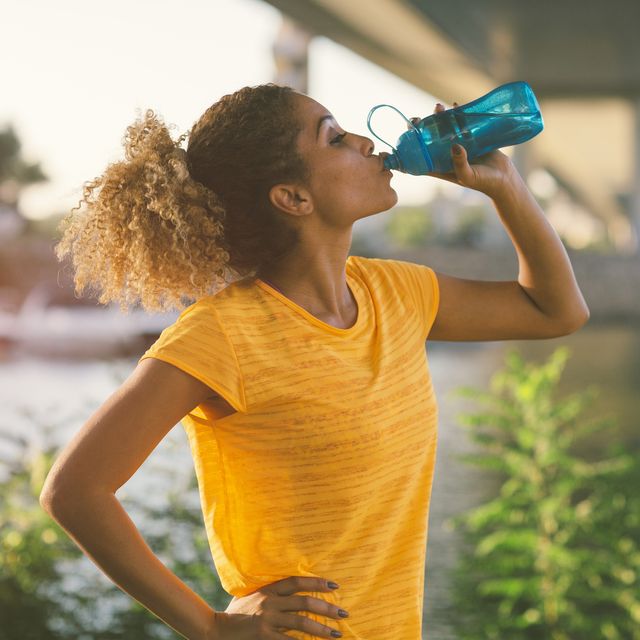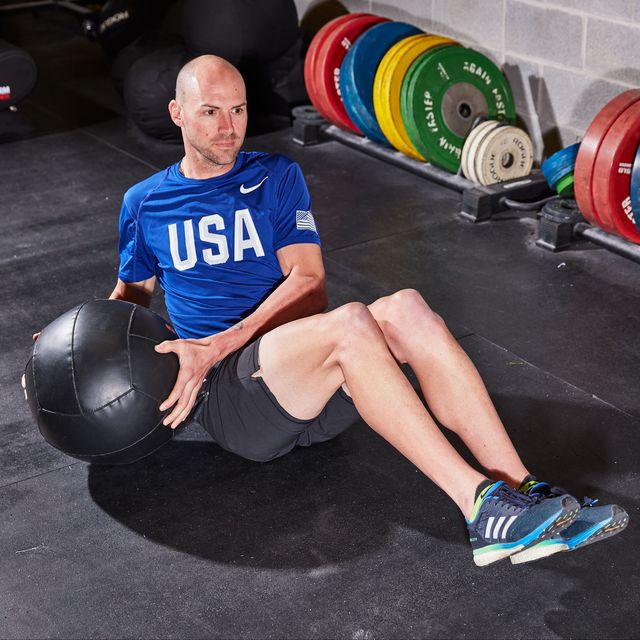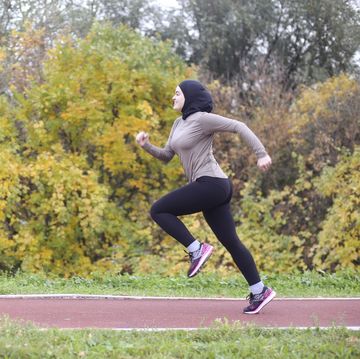- Keeping up on your fluid intake may help prevent heart failure, according to research presented at the recent European Society of Cardiology meeting.
- A good rule of thumb when it comes to hydration is to aim for about 60 to 80 ounces of water daily.
Keeping up on your fluid intake is an important part of race performance and training recovery, but here’s one more reason to keep emptying that water bottle: It’s good for your heart.
Maintaining good hydration over time may slow down age-related changes within the heart that lead to heart failure, according to research presented at the recent European Society of Cardiology meeting.
→ Join Runner’s World+ today for exclusive access to the latest health and running news!
Researched looked at nearly 16,000 middle-aged adults who were part of the long-running Atherosclerosis Risk in Communities study, and they found those who had good hydration habits were less likely to develop heart failure over a 25-year time period.
That’s because when you drink less fluid—particularly water—your concentration of serum sodium increases. Basically, you have too much sodium in your blood, and the longer that continues, the higher your risk of heart problems becomes.
Over time, your body shifts toward conserving water as a way to counteract that abundance, and that can activate processes related to poor heart function, researchers noted. For example, in the study, those with heart failure tended to develop a condition called left ventricular hypertrophy, which affects the heart’s ability to pump blood, and involves a thickening of tissue within the heart muscle.
Another potential factor when it comes to increased sodium in your blood is cognitive function. Although that wasn’t covered in the study, it’s important to recognize how seriously dehydration can affect brain as well as heart function, said Barbara Bergin, M.D., an orthopedic surgeon at Texas Orthopedics, Sports & Rehabilitation Associates in Austin.
“With high serum sodium levels, your brain cells basically shrink because they don’t have enough water,” she told Runner’s World. “Not surprisingly, that leads to more confusion or brain fog because they’re not working optimally.”
Other potential signs that you’re not getting enough fluid include lightheadedness, dry mouth, constipation, and orthostatic dizziness—which is that “whoosh” feeling you may get when transitioning from sitting or lying down to standing.
“When you’re dehydrated, your blood volume decreases,” she said. “Plus, blood pools in the legs when you’re sitting or lying down, so when that’s combined with less volume, you’ll get lower blood volume to the brain. Subsequently, there’s dizziness.”
Another major consideration is that we tend to hold on to less water as we age, according to Scott Kaiser, M.D., geriatrician and director of geriatric cognitive health for Pacific Neuroscience Institute at Providence Saint John’s Health Center in California.
He told Runner’s World that it’s like driving with a smaller gas tank—you can still fuel up for where you need to go, but frequency of filling up is just as important as volume.
“You can get fluids from many sources, including fruits and vegetables, as well as non-caffeinated beverages,” he said. “But it’s helpful to simply drink water more often, before you get thirsty. That’s important at any age, but especially as you get older.”
Recommendations on daily fluid intake vary, but span from 54 to 71 ounces for women and 67 to 101 ounces for men. The researchers of the recent study noted that worldwide surveys show that many people don’t meet even the lower ends of these ranges. How much you get will depend on your weight, age, and whether you’re active, but a good rule of thumb is usually to aim for about 60 to 80 ounces daily.
Elizabeth Millard is a freelance writer focusing on health, wellness, fitness, and food.

















